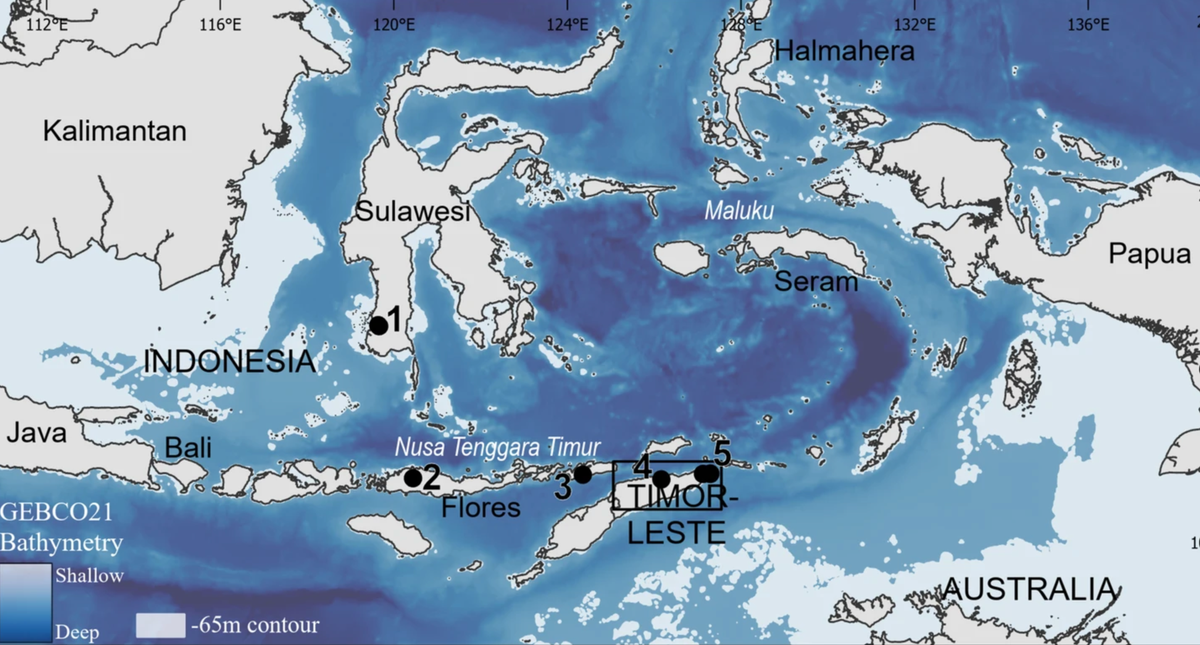
Archaeologists have unearthed stone artefacts and animal bones in a deep cave on Timor Island in the Pacific, forcing a rethink of when and how ancient humans first migrated to Australia.
Timor Island has long been seen as a stepping stone for the first human migration between mainland Southeast Asia and Australia and New Guinea. But the new findings challenge this theory.
Researchers dated and analysed the artefacts and sediments from the Laili rock shelter in Timor-Leste, north of Australia, to pinpoint the first arrival of humans in the region.
The Laili rock shelter, unlike other sites in the region, preserved deep sediments dating 59,000 to 54,000 years ago that showed no clear signs of human occupation.
This means that humans arrived in the Pacific region about 44,000 years ago and there was no habitation on Timor Island before this time.
The findings further indicate that early humans were getting to Australia by using New Guinea rather than Timor Island as the stepping stone.
“This is significant as these islands were most likely a gateway crossing for ancient humans making the crossing to Australia,” Shimona Kealy, a co-author of the study from The Australian National University , said.
“When we analyse and compare markers of human occupation from other sites across Timor-Leste and nearby Flores Island, we can confidently say humans were also absent throughout the wider region of the southern Wallacean islands.”
Researchers also found evidence that migration to these islands was ongoing, with evidence of occupation thousands of years after the initial settlement of Australia.
“The traditional view held by researchers is that early humans who were making these significant water crossings were stumbling upon these islands by mistake, largely because it was so long ago,” Dr Kealy said.
“Their arrival on Timor was no accident. This was a major colonisation effort, evident through the sheer number of people who were making the journey.”
Researchers said the findings are a “testament” to the maritime technology of the early humans, their boats and their confidence and competence in crossing the seas.
As early humans arrived on Timor Island, likely from the nearby Flores Island and mainland Southeast Asia, they used the cave very intensively with clear evidence of burning and trampling of the floor underfoot. “The shift from pre-occupation to intensive human activity at the site was very clear in the sediments,” Mike Morley, another author of the study from Flinders University, said.
Archaeologists found small stone tools and charred fish bones during the excavation, but are unsure what they were used for.
“Because a lot of their diet was either shellfish or small animals, you don’t really need big knives to gather that sort of food. But having small, fine tools is useful for things like stripping leaves to then weave into baskets, but also for creating wooden tools,” Dr Kealy explained.







